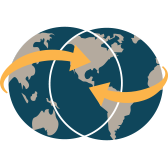In Iran we found repeated confirmation of Ahmadinejad’s assertion that his constituents were concerned about improving their lot in life. But we also found that the government faces increasing difficulty delivering sufficient economic benefits. Despite the steep rise in oil prices over the past few years and strong growth rates in the economy overall, benefits to Iranians have trailed off.
Almost a third of a century of sanctions have taken their toll, fueling the black market and forcing Iranians to pay its high prices for medicines and other essentials. Inflation, estimated to be as high as 30 percent, is also eroding living standards; the price of some basic food commodities like potatoes and tomatoes quadrupled in six months. The country’s oil infrastructure is decaying, and it has been unable to reap a full return on the high prices because it cannot meet the export quotas set by OPEC. Domestic consumption of highly subsidized natural gas and gasoline is rising rapidly, and in the case of gasoline, Iran’s minimal refinery capacity means it must import at market rates in order to sell gasoline to the public for 35 cents a gallon. Surpluses gained from higher oil revenues that are not lost to the subsidy on gasoline appear to be consumed by the government and the network of clerical organizations that control these revenues.
In the years immediately after the 1979 revolution, the standard of living for average Iranians improved markedly, even though gross domestic product declined precipitously and has recovered pre-revolution levels only in recent years. Electrification and piped water were brought to more than 90 percent of the population. Natural gas for cooking and heat was piped into 90 percent of urban households. Health, family planning, primary education, and other government-supplied services dramatically expanded. Birth rates declined to close to the replacement level for Iran’s population. As many as 90 percent of households were able to purchase televisions, and phone service was brought to rural areas.
According to UNICEF figures, childhood mortality rates under the Shah ran nearly as high as those in India, then a much poorer country. After the revolution these rates declined from 130 deaths per thousand children under five in 1980 to 72 in 1990, 55 in 1995, 44 in 2000, and 41 in 2002. In the United Nations Development Programme’s Human Development Report for 2006, however, Iran’s oil-rich per capita income of $7,525, which places it 72nd among 177 countries surveyed, does not translate proportionately into a higher standard of living: Even while absolute poverty is low in Iran (35th out of 177 countries, considerably lower than under the Shah), the country ranks only 96th in terms of the UNDP’s overall human development index, 85th in terms of total life expectancy and adult literacy, and 92nd in terms of enrollment of potential students in schools, colleges, and universities.
Previous: President Ahmadinejad in Person
Next: In Peace, Economic Strivers Question Their Government

